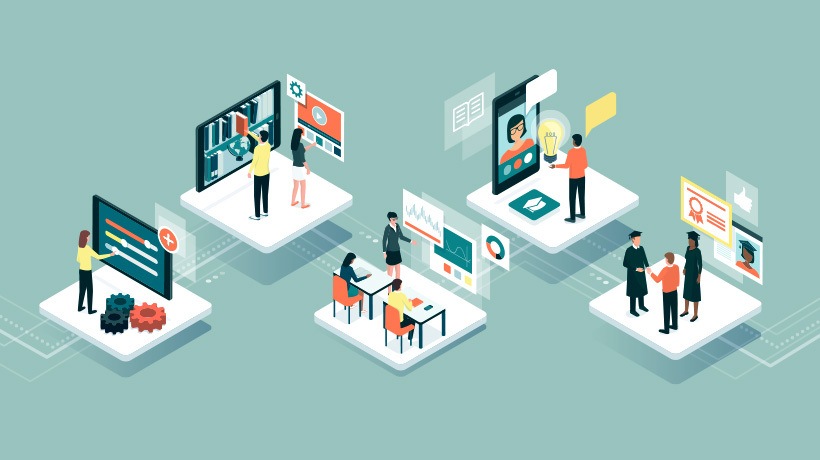How To Map Your Content To The Desired Outcome
eLearning is deployed with a purpose. The purpose could be to achieve a certain performance outcome or to bring about certain behavioral changes. In either case, unless you define the expected outcome before developing a course, you are, at best, on a fishing expedition!

Defining Outcomes
The first step, then, is to define the outcomes that are desired. To do that, you need to outline your training plan and be very specific about what is required to be achieved. Then, break the overall outcome into smaller pieces—where each measurable action becomes an independent outcome. Now, ensure you have the content to map to each of these desired outcomes. There you have it—a perfectly usable set of desired learning outcomes!
So, What Next?
Armed with the desired outcomes and the corresponding content, you create your eLearning course. Stay true to your intent and give it all you've got! Soon, you'll have a spanking new course awaiting its learners. Deploy it, and your job is done.
NOT!
It’s easy to pat yourself on the back for a job well done, once the development is complete. But truth be told, you're just halfway there! Your job is truly done when the actual outcome matches the desired outcome.
“What is it that you truly desire?” – Lucifer Morningstar
Well, Lucifer may not have been referring to learning outcomes, but we as leaning designers follow pretty much the same philosophy. And, the favor must be granted!
Putting it into perspective, when there is a desired outcome, it must be met. It's fair, then, to say that what we expect out of our eLearning course is the fulfillment of the desired outcomes.
Performance Outcomes
Performance outcomes are relatively easy to measure. If the course imparts learning on a certain process, then the measure is whether the process is being followed by each learner. If the course is about increasing production on the shop floor, all you have to do is compare numbers for before and after. Sales training? Check the order books. Compliance training? Check the incident logs or lawsuits!
Behavioral Outcomes
Bringing about changes in behavior is generally more time-consuming, and tougher to measure. For example, you can't expect that just by taking an eLearning course, people will start being nice to each other! It takes patience and perseverance to bring about certain change—yet, over a period of time, it is measurable. Be warned—trying to bring about behavioral change is an iterative effort. The reinforcement required is high, just to sustain the message.
What’s The Key To Success?
The key to success is the measurement. Unless you measure the outcome against set parameters, your perception of the effectiveness of the course is mere speculation. Here are a few quick tips for the overall effectiveness of your custom eLearning development efforts:
1. Monitor Performance
Monitor performance regularly, over a period of time. Check for anomalies or inconsistencies in your recordings. Compare against past performance. Intervene with reinforcements periodically.
2. Assess Knowledge Retention
Assessing the learners immediately on completion of the course may not be a good enough indicator when the change you desire is long-term. Assess them at intervals, to really determine whether they remember what they were taught—recall would generally occur when they are in the habit of using the recently acquired knowledge.
3. Reiterate And Reinforce
Regardless of how positive the results appear or how promising they look, the learning journey does not begin and end with a single course—the course is "a piece of the continent, a part of the main". Plan out enough reinforcement material when you are developing your course.
4. Keep Finetuning
Expecting your eLearning course to be a runaway success is Utopian. You may need to make tweaks and adjustments until you get it right. Keep at it, and you'll end up with what "you truly desire!"
Wrapping Up
It is, therefore, important to have a clear vision of your goals. Spend time considering what you wish to achieve, before diving into creating or curating the content. The training needs analysis is an all-important step in your journey, so ensure you've done your homework before starting the design and development process. Remember, the effectiveness of your training program relies heavily on the planning that goes behind it! Download the eBook Developing Custom eLearning That Results In Efficient Corporate Training Delivery or watch this webinar to understand the several layers involved in overcoming these pain points!








